Landskipping by Anna Pavord: There's more to a landscape than meets the eye
Hills, valleys, woodland, fields, the sky above – none of it ever looking the same from one day to the next
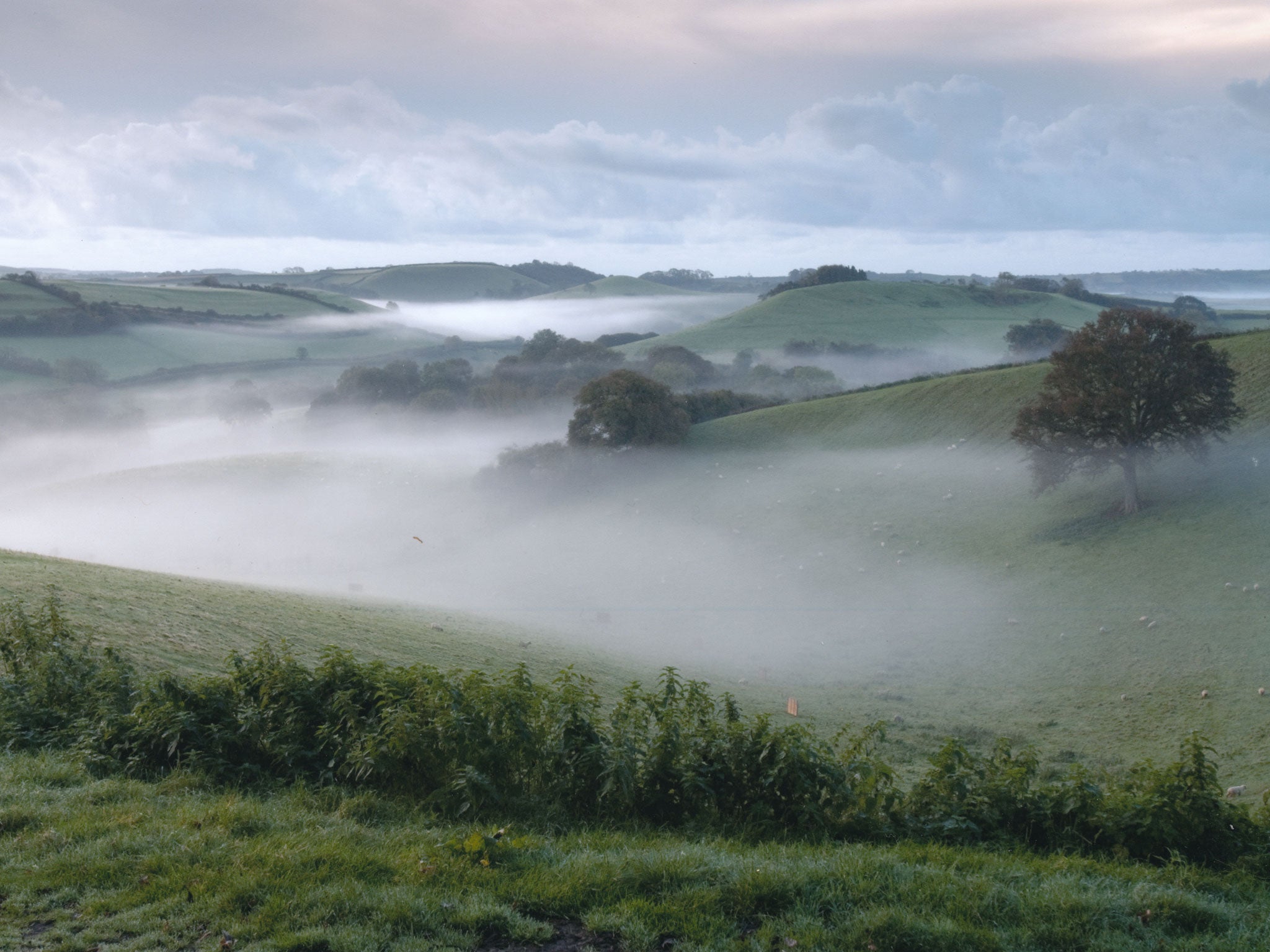
Your support helps us to tell the story
From reproductive rights to climate change to Big Tech, The Independent is on the ground when the story is developing. Whether it's investigating the financials of Elon Musk's pro-Trump PAC or producing our latest documentary, 'The A Word', which shines a light on the American women fighting for reproductive rights, we know how important it is to parse out the facts from the messaging.
At such a critical moment in US history, we need reporters on the ground. Your donation allows us to keep sending journalists to speak to both sides of the story.
The Independent is trusted by Americans across the entire political spectrum. And unlike many other quality news outlets, we choose not to lock Americans out of our reporting and analysis with paywalls. We believe quality journalism should be available to everyone, paid for by those who can afford it.
Your support makes all the difference.There's a gateway on the lane that leads out of our valley, and there, over the rails of the gate, is a view that stops me every time I pass. It isn't one of those ooh-aah views that attract tourists in the Lakes or the Highlands of Scotland. It's a quiet view, but the way the pastures roll quietly down into the valleys, the small copses of trees, the way the light casts different shadows down the slopes, all these calm, soft movements offer peace. Solace. Engagement. A slow-burning delight. This is a view that welcomes you into, rather than separates you from, the land.
Certain things about it can be pinned down. The hills have names: the smooth hump of Hincknoll Hill immediately to the right, the three humps of Mangerton Hill, Gravel Hill and the smooth flat top of Brown's Hill beyond. The dark vortex of the view is Hincknoll Coppice, a mixture of hazel and gean, oak, sycamore and thorn. Over on the left, there are strip lynchets with the banks between them lined out in bracken. On the horizon are the ramparts of Eggardon, the great Celtic hill fort. The plateau of its summit marks the horizon, the limit of my view.
So this is the physical nature of it. These are its bumps and hollows, its folds and valleys. But in a landscape that has been continuously occupied for thousands of years, I'm absorbing also the labour of the people that have lived here. Crumbling stone lime-kilns in the fields, rusting hydraulic rams in the streams, the remains of a roughly constructed sheep dip, speak of the constant effort to persuade the land to provide a living.
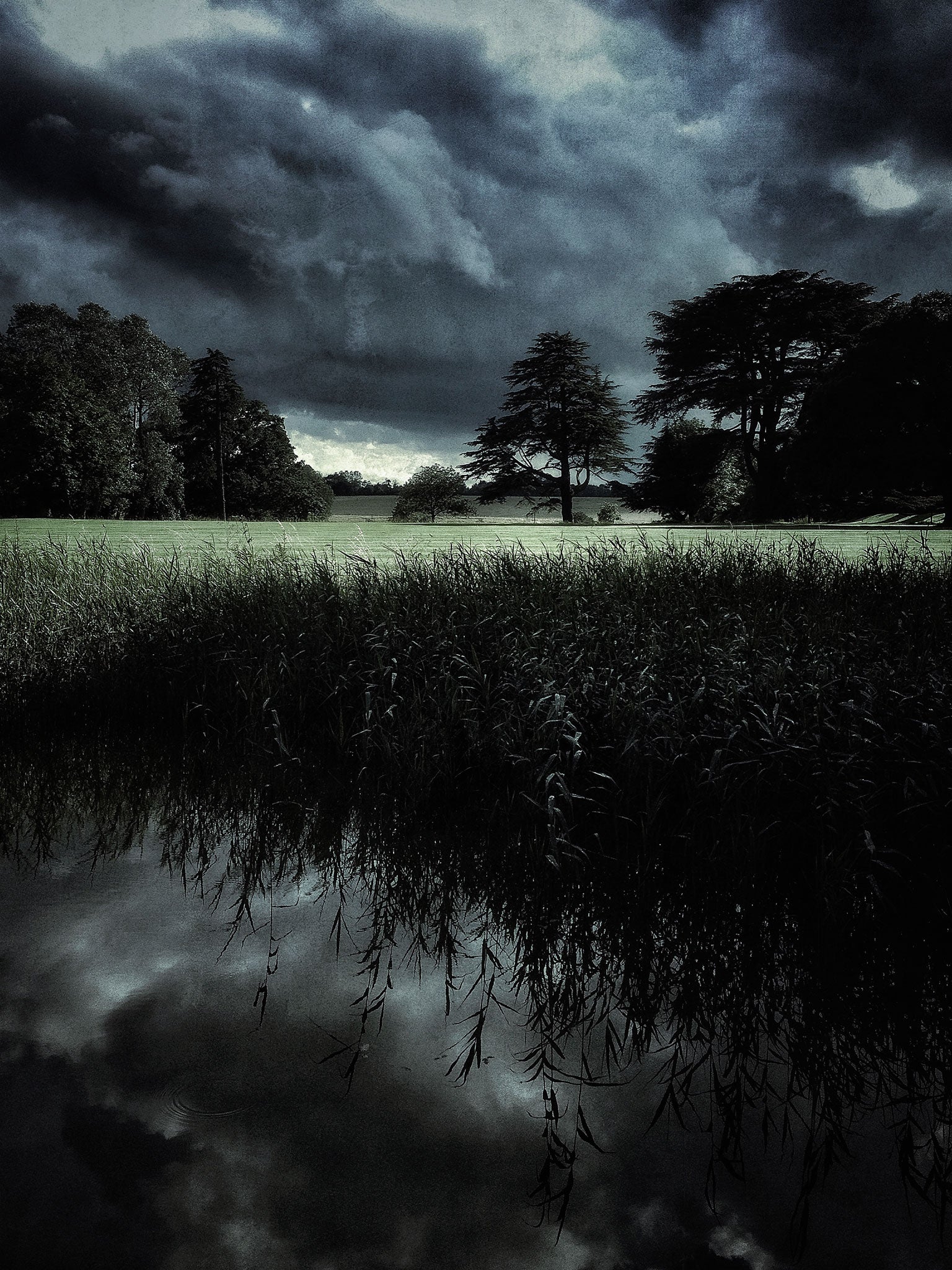
Time is stitched into this landscape – any landscape – but time as measured by many different kinds of clock. Geologists measure it in millions of years, the years that underpin what I'm looking at now. Historians measure it in thousands, tracking the interventions between man and land, the making of the lynchets to provide more favourable growing ground, the planting and laying of hedges. The farmer's clock is set by the seasons, the roll of solstice and equinox that marks spring and summer, autumn and winter.
So if there is any beginning in the working landscape I look at over the gate, then I'd put it at Michaelmas, 29 September. Michaelmas, Christmas, Lady Day and Midsummer Day are the Quarter Days fixed into our calendar since the Middle Ages. They fall very close to the times of the summer and winter solstice (the longest and shortest days), and the two equinoxes, when day and night are of exactly the same length. These are not random dates.
Michaelmas is a kind of fulcrum in the farming year. The crops of the current year have mostly been gathered in, and there's a brief pause before fields are ploughed and sown for the following season. The landscape over the gate is holding its breath in the way that only happens in early autumn. In the early morning, mists fill the hollows in diaphanous layers, trees and hills separated from each other by the gauzy ectoplasm. Sheep return to the pasture. The sun, lower in the sky now, throws long shadows even by mid-afternoon. The fact I'm looking south is one of the reasons this view constantly intrigues. The sun moves across it from left to right and the shadows swing round with it. Different elements of the landscape catch the light, rise pre-eminent, then fall back as the sun moves on.
Butts for the shooters are set up on the nearest slope. The rounded head of the oak at the edge of the copse moves very slowly from dun green into a pale brown. The larches in the copse turn to a fox colour. By the time of the solstice, the trees stand bare, finer, more interesting in this skeletal state than they are fluffed about with leaves. Even by eight in the morning the sun has scarcely pulled itself up over Eggardon's plateau to bring light into the view over the gate. By mid-afternoon it's once again lying back in shade, only the west-facing sides of the further hills still catching the low, slanting light from the sun.
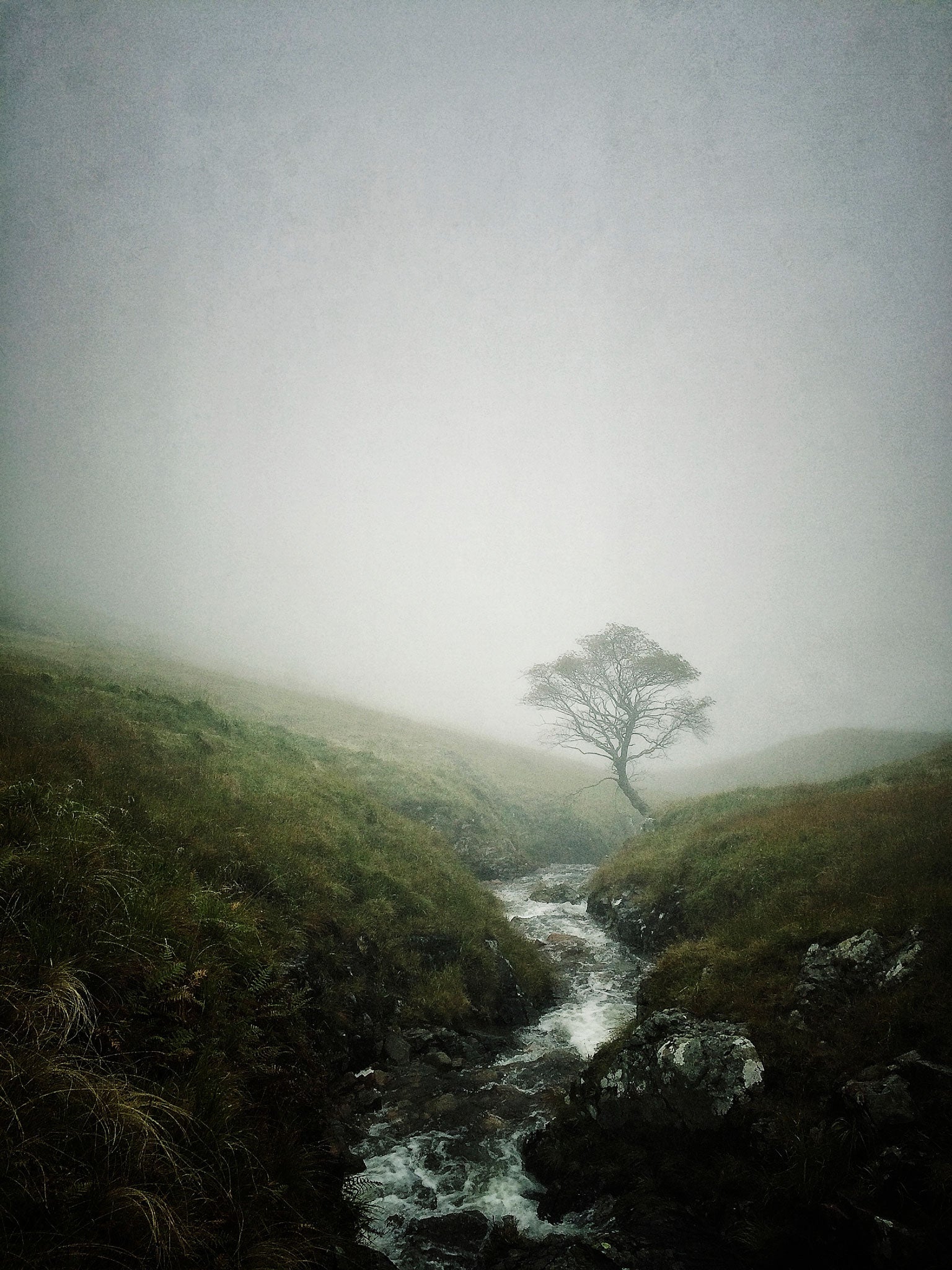
Paradoxically, the view over the gate is at its finest in winter. The land is reduced to its bones, and these are fine, ancient bones. Colour drains out, the lines of the hills, separated often by a line of mist between, are more strongly drawn. And as the land sinks into winter subfusc, colour bleeds across the sky at sunrise and sunset, burning pink and orange above while frost covers the slopes below.
Low winter light shows up features you don't see in summer: old tracks, hollows where stone has been dug out for building, the ridges made by sheep as they move across the slope, tumuli, burial mounds, disc barrows of the long dead. The land here holds the shapes of its past because it is poor stuff, incapable of much improvement: sheep, a few cattle, very little arable, no ploughs to smooth out traces of what has happened on it. So in winter, I stop longer than I do in summer, looking for the lives left behind on this land. Thinking of Absalom Guppy, who in 1839, owned the field called Long Strap, two acres of arable, all the land he had. Was he ever able to look out and enjoy, as I can, the view laid out in front of him, with its glittering glimpse of the sea?
Occasionally there's snow, which intensifies the monochrome nature of the view, disturbed only by the flashing, clattering flight of pheasant, taking unwillingly to the wing. Apart from them, there's little movement in the landscape: a tractor driver bringing fodder out to the sheep. Rooks, faraway. Snow muffles sound, as well as detail.
The end of winter is marked by the mole, and the swooping slopes of the pasture just over the gate are covered in the detritus of his underground wanderings. It's fine, beautiful earth; countrymen used to collect it for their seed sowing. Now it's left to provide a seedbed for vetch and pignut, buttercup and briar. Sometimes at this season the cloud hangs so low, it slices off the whole of the middle of the landscape. But then the geans come into bloom in the Bull's Hill coppice. They make huge trees, these wild cherries – landmarks, when in bloom, for miles around. The greens intensify. At midday, in the middle of April, the sycamore standing alone on the slope casts a neat shadow of itself on the ground, a perfect circle of branch and twig, each detail transfigured into two dimensions. As the sun swings round in the sky, the tree shadow slithers round with it, lengthens, distorts, stretches down the slope until it is subsumed in the general shade of evening.
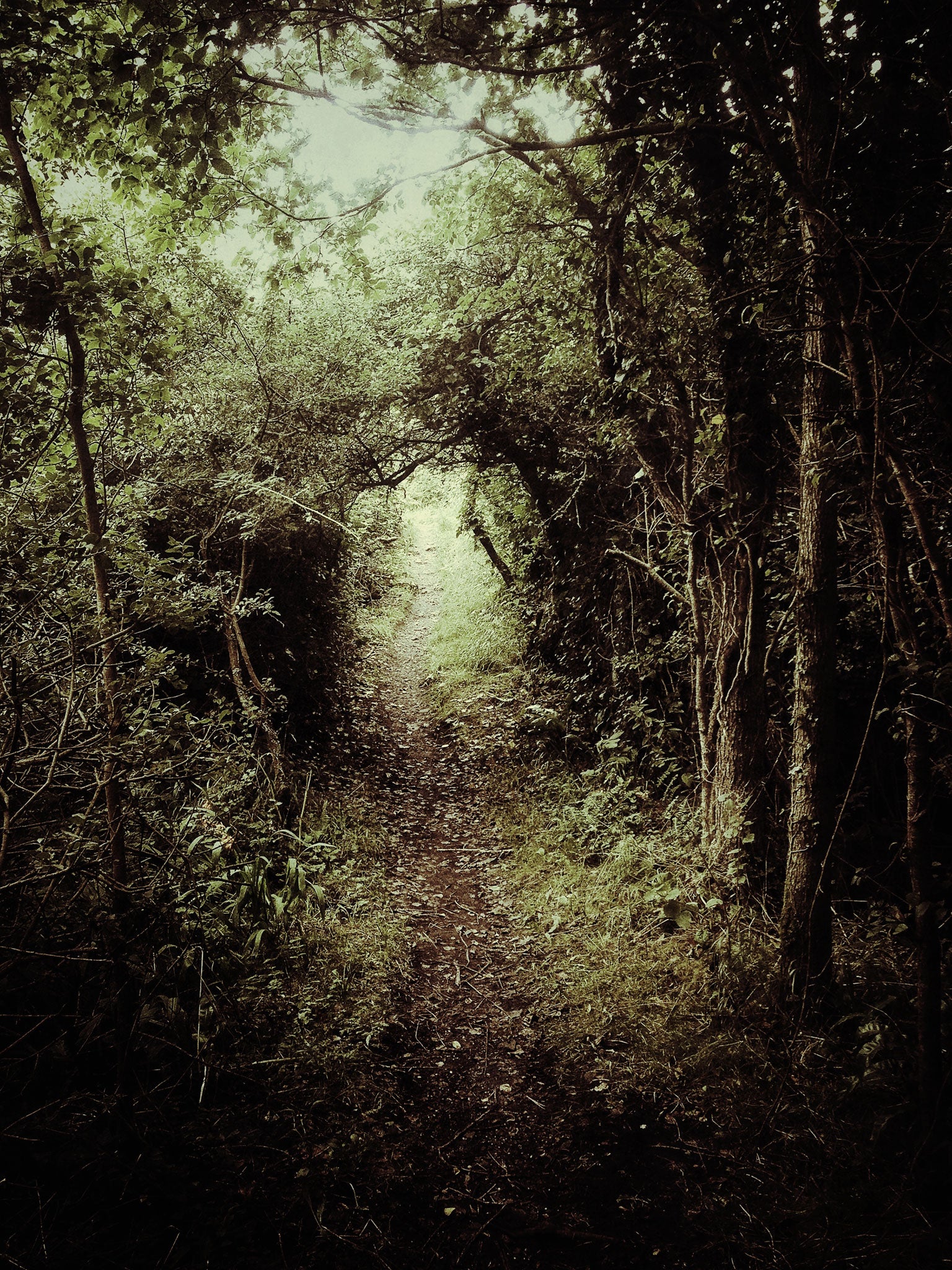
Early on a May morning, you can catch a sense of a world that has nothing to do with us: badgers, foxes, owls, bats, deer, ghosts move freely about in this landscape when we've got out of the way. Early in the morning you can hear separately each different bird in the dawn orchestra, blackbirds and robins doing their clarinet solos, wood pigeons droning on with the only phrase they know – "You CAN'T go just now. You CAN'T go just now." The landscape is very still. Black and white cattle have replaced sheep on the lush new grass of the pasture.
It's mostly pasture, this landscape, too hilly for much else, which is why, in the main, the pattern of the fields is the same now as it was when it was drawn out on the large scale OS map of 1903 – 25 inches to the mile. But the big square field that pushes up the side of Hincknoll Hill has arrived since then, probably in the 1950s when massive grants were paid to farmers to clear ground and grow more food. It catches the eye at this season, freshly ploughed and drilled with maize. Later in the year, the parallel rows turn the field into a bolt of green corduroy.
A long strip, mid-view, has been ploughed, too, and for the short time before they green over again, these two shapes stand out as fiercely in the landscape as the rectangles of a Mondrian painting. A tractor moves in to top off the wide sweep of pasture immediately beyond the gate, and marks out wide concentric semicircles on the grass. Docks, thistles, nettles are cut down; coarse tussocks of grass are combed out. The marks last a surprisingly long time.
Periodically the whole landscape is brushed over with the shadows of clouds passing above. The greatest variable in this (or indeed in any) landscape is the light. It epitomises the essential nature of landscape, that it is at the same time unchanging and ephemeral. But it is the most difficult thing to describe. The whole point of it is its fleetingness, its sudden brightness as R S Thomas describes:
"I have seen the sun break through
To illuminate a small field
For a while, and gone my way
And forgotten it. But that was the pearl
Of great price, the one field that had
Treasure in it."
In the evening and again early in the morning the angle at which light hits the land creates contrasts that are more vivid than at any other time of the day. But by high summer, the foliage of the trees becomes almost sullen; the light during the day is often too bright. This is not the best time to look at the landscape I have in mind. Growth at the verges of the fields is coarse and rank. The tractor driver returns to fight bracken on the slope behind the sycamore. It's too steep for him to move across the land. Instead he reverses up the slope, cuts his way down, reverses back up again, an arduous process, an ancient enemy.
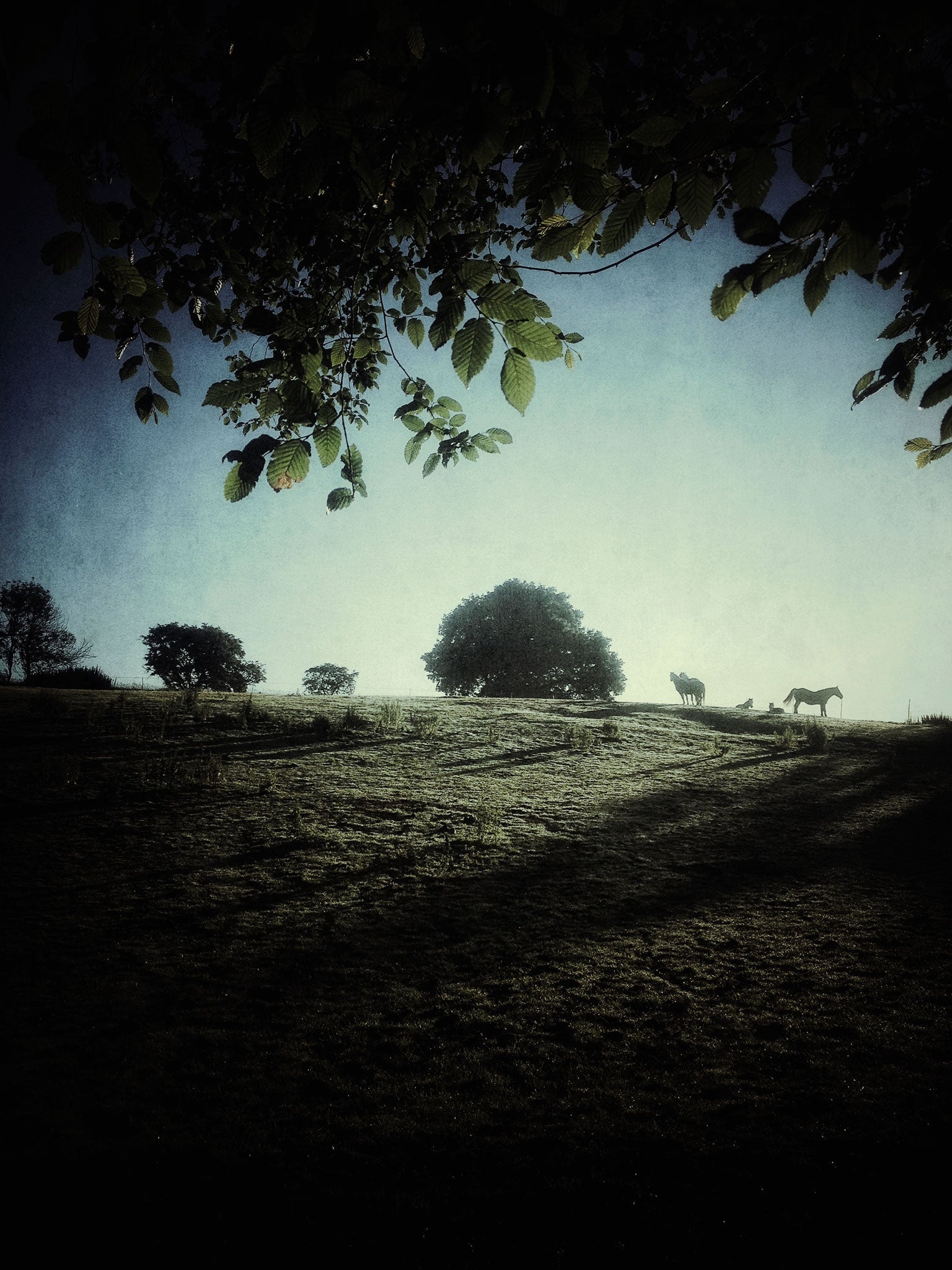
I try not to romanticise this landscape I look at almost every day. My grandfather, my mother's father, left for America to escape the great agricultural depression that hit Britain at the end of the 19th century. Wheat that had been worth 70 shillings a quarter was fetching just 24 shillings by 1894. The long succession of wet, cold springs and unproductive summers of that time is stitched into this West Dorset landscape too. Adversity leaves its marks, but over time, the land repairs them. The sheep that disappeared from these pastures during the depression return again, wander again into the shade of the big sycamore where they lie in the hottest part of the day. By the end of summer they've worn the ground round its trunk into an island of bare earth. The landscape settles into a soft, dreamy, half-asleep mode: Samuel Palmer mode.
Like a sheep, I am hefted now to the hills of West Dorset, a landscape encapsulated in this unassuming view over the gate. At Michaelmas, I gaze again into the misty distance beyond the final horizon of the land. It is evening and the sky is striped in layers of horizontal cloud. I can hear a pair of ravens calling to each other.
The best landscapes draw you back again and again, because however many times you look at the same view, it never is the same. Some changes, like the growth of the sycamore in the pasture are imperceptible. Some come suddenly, shockingly, as when a big, old, landmark tree is blown over in a gale. A landscape is both ephemeral and unchanging, particular yet timeless. In temporal terms, there's no beginning or end to it. The flux is constant, though the pleasure is ever-enduring. And it's a pleasure available to us all. Views like this are free. All we have to do is look.
This is an edited extract from 'Landskipping' by Anna Pavord (Bloomsbury, £20). Order for £18 including P&P from The Independent Bookshop, 0843 0600 030
Photographs taken from #IPHONEONLY by Julian Calverley, available signed for £20 from juliancalverley.com
Join our commenting forum
Join thought-provoking conversations, follow other Independent readers and see their replies
Comments